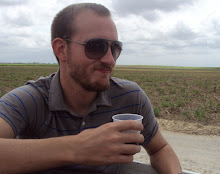This year marks the 50th anniversary of the Peace Corps. As part of the commemoration of that milestone, a congressional delegation, led by Senator Patrick Leahy of Vermont, visited the DR to learn more about Peace Corps and the work we do here. Other members of the delegation included Senator Kent Conrad of North Dakota, Senator Kay Hagan of North Carolina, Representative Peter Welch of Vermont and Representative Xavier Becerra of California. The senators and congressmen were accompanied by their spouses, assistants, security teams and the entourage one would expect of such a visit. The delegation was also accompanied by Aaron Williams, the International Director of Peace Corps (and a former PCV in the DR) and the US Ambassador to the DR, Raúl Yzaguirre. A fairly distinguished group of people to say the least.
Immediately after their plane landed, the delegation was driven to Batey Experimental (10km down the road from me) in order to visit a Peace Corps community and learn about a volunteer project. Peace Corps Volunteers from each Senator or Congressman’s home state accompanied them on the bus ride to the batey and talked all things Peace Corps.
Upon arrival in Experimental, the delegation was met by members of the community and Peace Corps personnel, myself included, and sat for a short presentation led by the Volunteer who lives in the batey, Kerri. Kerri, her host mom/community leader Victoria and USAID reps spoke briefly about their work in the batey. Then a number of Kerri’s youth participated in a Deportes para la Vida activity against volunteers from the delegation. Senators Leahy, Conrad & Hagan, Director Williams and others joined the Dominican youth in playing a game called Encuentre la Pelota (Find the Ball), which teaches that you can’t tell simply by looking at someone if they have HIV/AIDS. The members of the delegation seemed to really enjoy the game and participating alongside young Dominicans.
After some gift giving to local youth and obligatory photo ops, the delegation went for a tour around the batey to see first-hand the living conditions of the local people and to also see the living conditions of the volunteer, who lives in her own house. We volunteers translated for the members of the delegation as they asked questions to the people of Experimental and answered questions about the daily life of a PCV. As the batey is quite small, population 350ish, the tour was short-lived and the delegation hopped on buses to Santo Domingo where they had an evening reception at the US Embassy with invited Peace Corps Volunteers and other Peace Corps personnel. The following day the delegation visited Haiti before returning to the US of A.
It was an extremely unique opportunity to see a congressional delegation visit a neighboring batey and to meet the Senators, Congressmen, Director, Ambassador, etc. A very small number of volunteers were able to participate in the day’s events, making it a cool honor to be able to participate. It was also very humbling to see such distinguished individuals sincerely interested in the work that we do here.
As some of you may know, national service organizations like Peace Corps and Americorps have taken a hit in their funding since the new congress took over. Americorps faces huge cuts and possible extinction. The Peace Corps, which received a large funding increase in 2009 following Obama’s election, has also had their funding cut. These visits by congressional delegations hopefully show to the powers that be how valuable these service organizations can be. If we can pay billions of dollars to bomb countries like Libya and trillions to fight wars in the Middle East, we can certainly afford to fund Peace Corps, Americorps, Teach for America and similar organizations and try to make America and the world a better place.
Official Peace Corps News Release of the Visit





